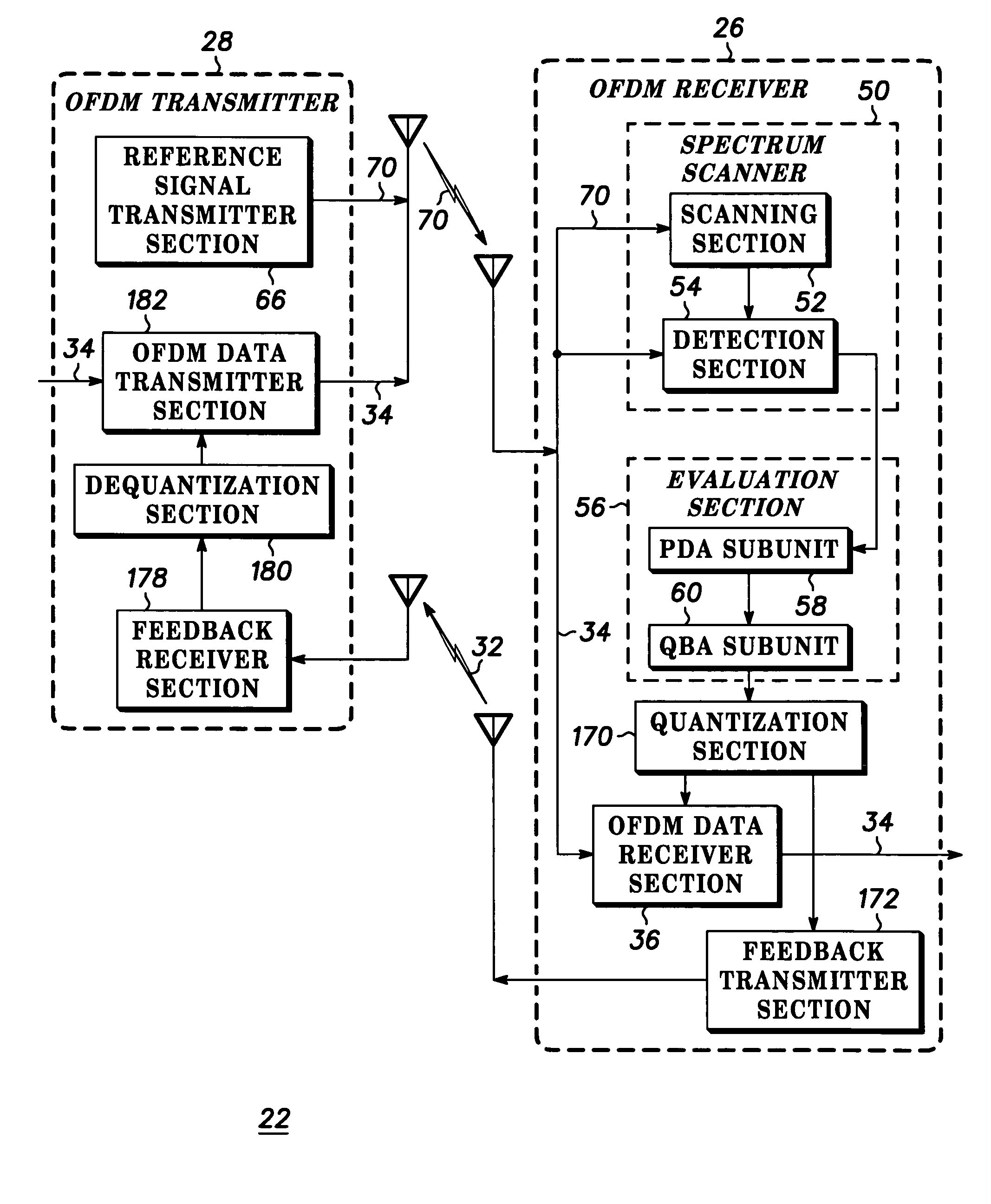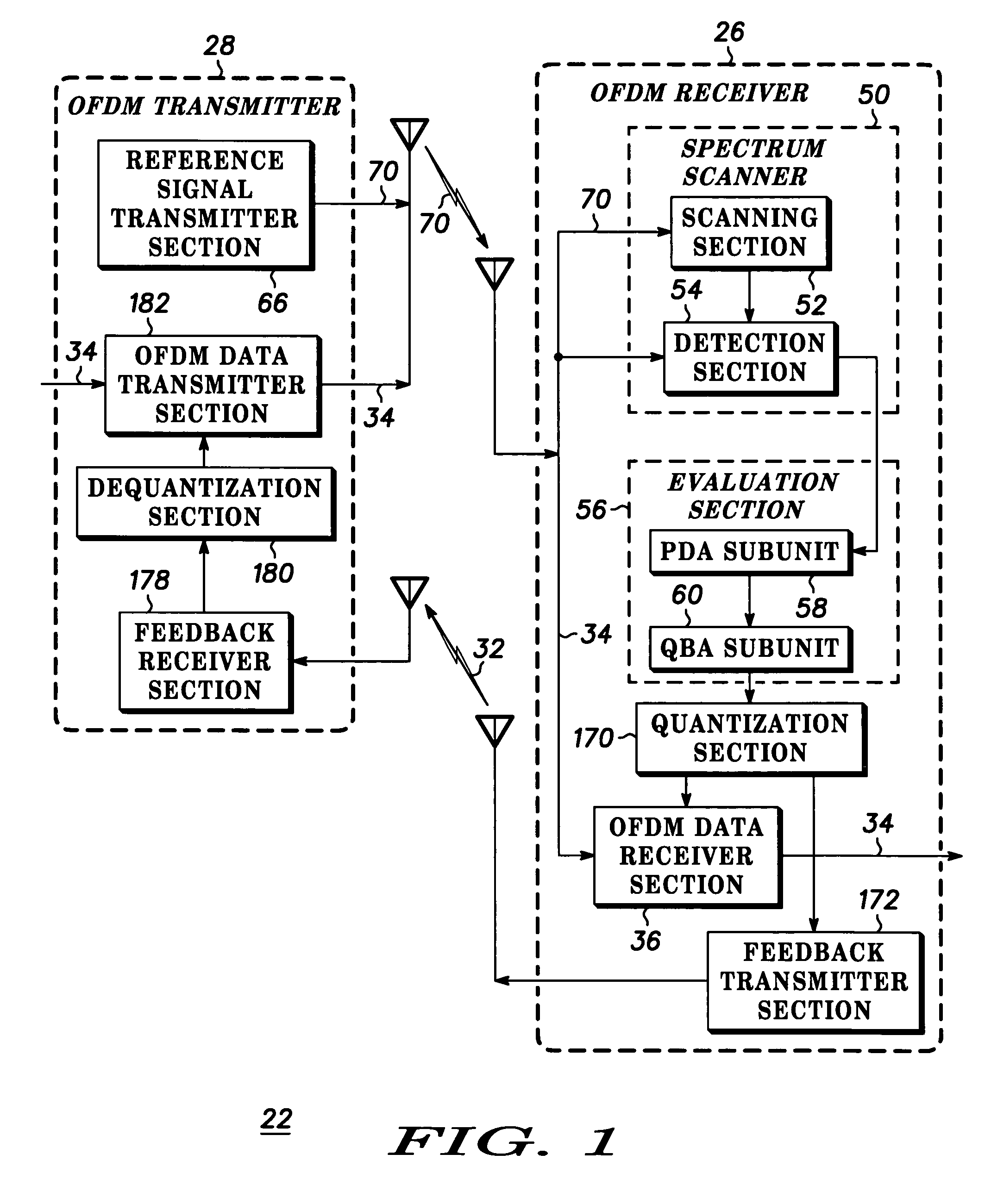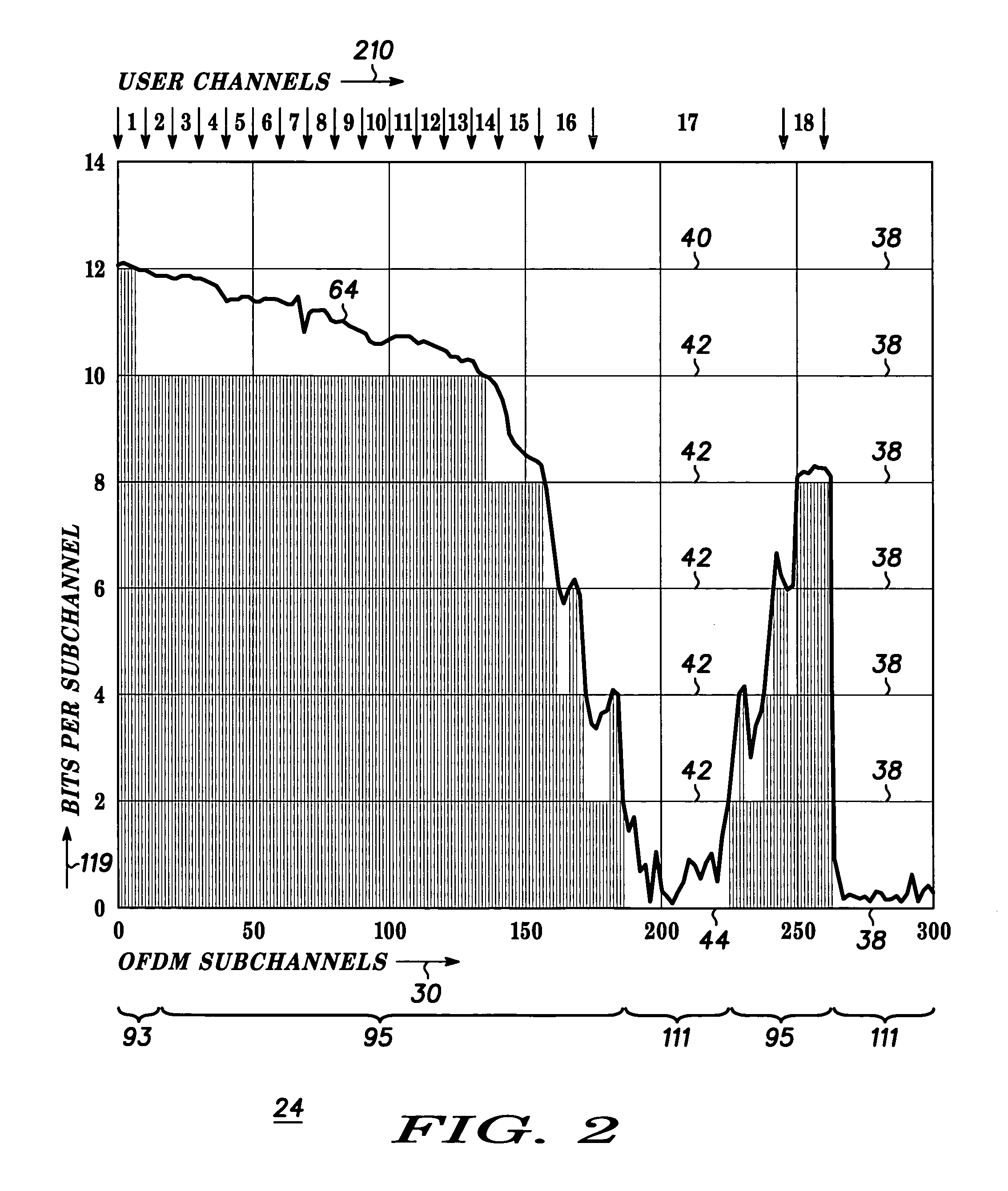Method of multiple-carrier communication within a noncontiguous wideband spectrum and apparatus therefor
a multi-carrier, non-contiguous technology, applied in the field of radiofrequency communication, can solve the problems of deterioration of single-carrier wideband communication techniques proximate the limits, difficulty in producing a substantially flat response over the entirety of the wideband channel bandwidth, and breakage of the spectrum of the wideband channel
- Summary
- Abstract
- Description
- Claims
- Application Information
AI Technical Summary
Problems solved by technology
Method used
Image
Examples
Embodiment Construction
[0022]FIG. 1 shows a block diagram depicting OFDM communication system 22 and FIG. 2 shows a chart depicting usage of wideband channel 24 by OFDM communication system 22 in accordance with a preferred embodiment of the present invention. The following discussion refers to FIGS. 1 and 2.
[0023]OFDM communication system 22 is made up of an OFDM receiver 26 and an OFDM transmitter 28 in communication with each other over a plurality of subchannels 30 within wideband channel 24. OFDM receiver 26 produces a modulation profile (not shown) of subchannels 30, and transmits the modulation profile to OFDM transmitter 28 over a feedback channel 32. OFDM transmitter 28 then transmits OFDM data 34 to OFDM receiver 26 in response to the modulation profile. OFDM receiver 26 receives and decodes OFDM data 34 in an OFDM data receiver section 36. OFDM data 34 in each subchannel 30 is received at one of a plurality of signal levels 38, being a maximum subchannel signal level 40, at least one intermedia...
PUM
 Login to View More
Login to View More Abstract
Description
Claims
Application Information
 Login to View More
Login to View More - R&D
- Intellectual Property
- Life Sciences
- Materials
- Tech Scout
- Unparalleled Data Quality
- Higher Quality Content
- 60% Fewer Hallucinations
Browse by: Latest US Patents, China's latest patents, Technical Efficacy Thesaurus, Application Domain, Technology Topic, Popular Technical Reports.
© 2025 PatSnap. All rights reserved.Legal|Privacy policy|Modern Slavery Act Transparency Statement|Sitemap|About US| Contact US: help@patsnap.com



